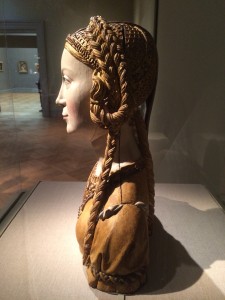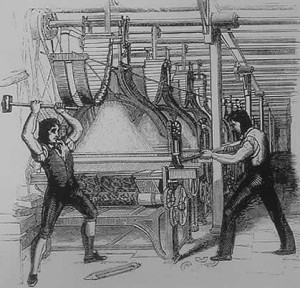A reliquary is a container for relics. These may be the purported or actual physical remains of saints, such as bones, pieces of clothing, or some object associated with saints or other religious figures. The authenticity of any given relic is often a matter of debate; for that reason, some churches require documentation of the relic’s provenance. (from wikipedia).
The reliquary bust of Iris Lee is housed in the collection of Kenneth Nintzel, who will loan it to The Oracle exhibit at The Brick theater in Brooklyn for our presentation opening October 22. (Pictures coming soon).
A similar reliquaries include the handmaidens of Saint Ursula. The Reliquary below lives at the Metropolitan Museum of Art in New York City. in the second photo the opening is visible, into which the skull of handmaiden’s skull was kept.


Ursula’s legend is that she was a princess who, at the request of her father in south-west Britain, set sail to join her future husband, the pagan governor of Armorica, along with 11,000 virginal handmaidens. After a miraculous storm brought them over the sea in a single day to a Gaulish port, Ursula declared that before her marriage she would undertake a pan-European pilgrimage. After setting out for Cologne, which was being besieged by Huns, all the virgins were beheaded in a massacre.
The image below shows a portion of the skulls located in the Golden Chamber of the Basilica of St. Ursula in Cologne, Germany. These relics are allegedly from Ursula and the virgins who accompanied her, although their actual origin is disputed.
We look forward to sharing the reliquary of the skull of Iris Lee with the public. Members of the Luddite church who are interested in worshipping in its presence are welcome to attend the exhibit.



 The Luddites were textile workers and weavers from the first British Industrial Revolution circa 1811-1816, who protested against technologies that automated their industry. The powered looms and stocking frames threatened to replace them with less-skilled, low-wage laborers, leaving them without a livelihood.
The Luddites were textile workers and weavers from the first British Industrial Revolution circa 1811-1816, who protested against technologies that automated their industry. The powered looms and stocking frames threatened to replace them with less-skilled, low-wage laborers, leaving them without a livelihood.